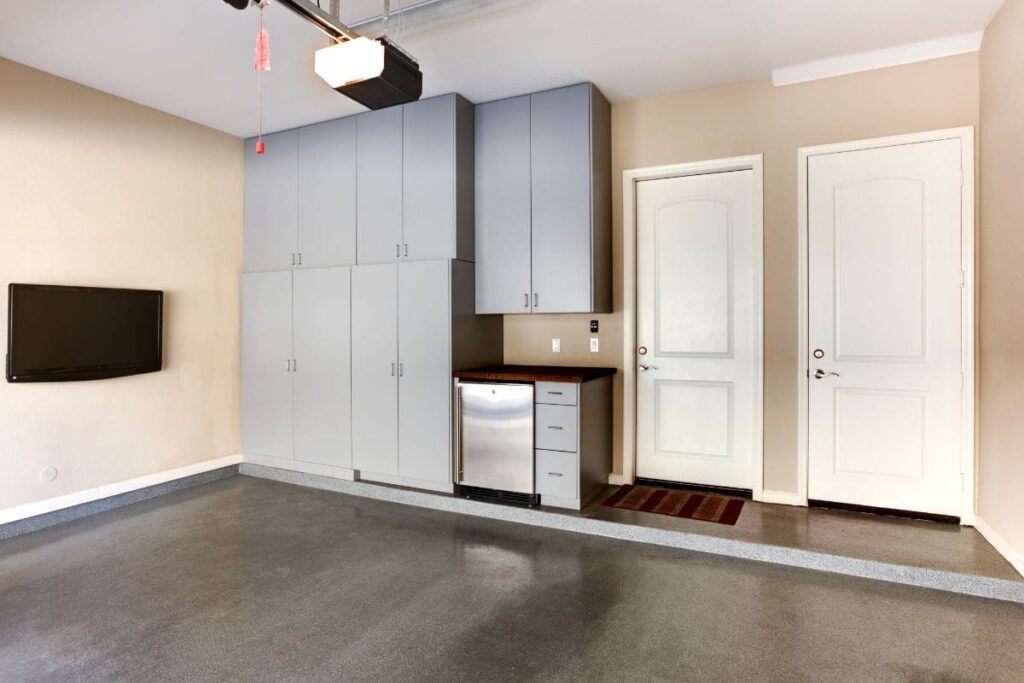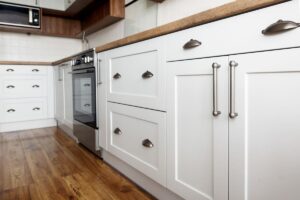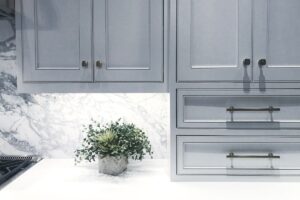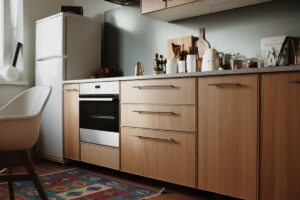When it comes to furnishing your home, the debate between cabinet vs dresser for storage often surfaces. Each piece has its merits, but also potential drawbacks that can impact your storage strategy.
This post aims to provide you with in-depth insights to help you make an educated choice.
We’ll delve into the key differences between the two, consider which is a better fit for specific needs, and set the stage for your next furniture shopping trip.
With this comprehensive guide, you’ll be better equipped to optimize your living space effectively.
Quick Comparison
| Criteria | Cabinet | Dresser |
|---|---|---|
| Definitions and Uses | Primarily used for storing various items, not limited to clothes. | Specifically designed for storing clothes. |
| Size and Material | Varies widely; can be small to large and made from wood, metal, or plastic. | Larger, more horizontally oriented; generally made from wood. |
| Style Variations | Offers both modern and traditional styles. | Styles often align with bedroom sets or specific décor themes. |
| Design Variations | May include glass doors or intricate designs. | Includes styles with combo features like drawers and shelves; may have mirrors. |
| Functionality | Suited for a wider array of items, may include built-in features. | Focused on clothing storage, may have a mirror or specialized compartments. |
| Benefits | Versatile, can be used in various rooms for multiple storage needs. | Efficient drawer design, better visibility and access to stored items. |
| Storage Space | Features shelves or a combo of shelves and drawers; occupies less floor space. | Mainly drawers; takes up more floor space. |
| Specific Types | Kitchen, bathroom, and bedroom cabinets are common. | Horizontal, double, and combo dressers are popular variants. |
| Contextual Usage | Suitable in kitchens, bathrooms, and bedrooms for a variety of items. | Mostly used in bedrooms for clothing storage. |
| Exceptions & Custom | Cabinet-dresser hybrids exist. | Custom furniture may deviate from conventional definitions. |
| Choosing Based on Needs | Suitable for versatile storage needs; smaller footprint. | Suitable for more drawers and surface area; ideal for larger rooms. |
| Common Mistakes & Tips | Not ideal for clothing storage; can cause disorganization. | Not ideal for storing larger items; may cause damage. |
Key Features and Specifications
When selecting furniture for storage, understanding the features and specifications of cabinet vs dresser can aid in making an informed decision.
Let us delve into the nuances of materials, size, style, and functionality for both.
Typical Materials Used in Cabinets and Dressers
Cabinets are often made from hardwoods like oak, cherry, and maple or engineered woods such as plywood or MDF. On the other hand, dressers commonly utilize materials like solid wood, plywood, and sometimes metal or glass for decorative purposes.
| Material | Cabinet | Dresser |
|---|---|---|
| Hardwood | ✔️ | ✔️ |
| Engineered Wood | ✔️ | ✔️ |
| Metal | ❌ | ✔️ |
| Glass | ❌ | ✔️ |
Note: The choice of material can greatly affect durability, appearance, and cost.
Size and Dimensions Commonly Available
- Cabinets: Generally, wall-mounted with a depth ranging from 12 to 24 inches and a width that varies.
- Dressers: Usually freestanding, with depths ranging from 18 to 22 inches and varying widths.
Understanding the dimensions is crucial for gauging how much storage space you’ll gain and how the furniture will fit into your existing space.
Style and Aesthetic Choices in Both
Cabinets typically lean towards a modern or traditional design, often featuring details like molding or glass fronts. Dressers offer a broader range of styles, from rustic to contemporary, often accentuated by the choice of knobs and pulls.
- Modern
- Cabinets: Clean lines, minimalist hardware.
- Dressers: Sleek, sometimes handle-less designs.
- Traditional
- Cabinets: Raised-panel doors, ornate handles.
- Dressers: Often wooden, detailed designs.
Functionality and Storage Space in Cabinets and Dressers
Cabinets generally offer more segmented storage with shelves and are ideal for storing items that benefit from being out of sight. Dressers usually feature drawers, making them perfect for items like clothes, which benefit from a horizontal storage space.
- Cabinets:
- Overhead storage
- Can be customized with pull-out trays
- Dressers:
- Spacious drawers
- Sometimes include a mirror or small cabinets
The right choice between a cabinet and dresser hinges not only on the amount of space you have but also on what you intend to store. The differences in functionality are key in determining which is better suited for your specific needs.
Key Differences Between Cabinet and Dresser
Understanding the differences between cabinet vs dresser is fundamental to making the right choice for your storage needs.
Let us explore these variances in terms of use, design, quality, and the pros and cons of each.
Comparing the Uses and Applications
Cabinets are often found in kitchens, bathrooms, and garages, serving to store household items, tools, or kitchenware. Dressers are generally used in bedrooms and sometimes living rooms, primarily for storing clothes or personal items.
| Application | Cabinet | Dresser |
|---|---|---|
| Kitchen | ✔️ | ❌ |
| Bathroom | ✔️ | ❌ |
| Bedroom | ❌ | ✔️ |
| Living Room | ✔️ | ✔️ |
Note: Your choice should align with the specific application for maximum utility.
Storage Space and Design Variations
Cabinets offer more compartmentalized storage, often featuring both drawers and shelves. Dressers, on the other hand, mainly consist of drawers.
- Cabinets:
- Multiple shelves
- Drawer options
- Dressers:
- Multiple drawers
- Rarely includes shelves
The design variations directly affect how much and what type of items you can store.
How to Determine Quality in Each
For cabinets, quality is often determined by the type of wood used, the thickness of the materials, and the durability of the hardware.
For dressers, the joinery method, such as dovetail or tongue-and-groove, can indicate quality, as can the material of the drawers and overall frame.
| Quality Indicator | Cabinet | Dresser |
|---|---|---|
| Material | ✔️ | ✔️ |
| Joinery | ✔️ | ✔️ |
| Hardware | ✔️ | ❌ |
Benefits and Downsides of Choosing One Over the Other
Benefits
- Cabinets:
- Versatile in terms of placement
- Can be customized more easily
- Dressers:
- Easier to move
- Provides horizontal surface area for décor or utility
Downsides
- Cabinets:
- Generally fixed in place
- Can be expensive to customize
- Dressers:
- Limited to certain rooms
- Less efficient vertical storage
The benefits and downsides must be weighed carefully against your storage needs and room constraints.
By evaluating the key differences between cabinet vs dresser across various metrics, you’ll be better equipped to make an informed choice that suits your lifestyle and requirements.
Which is Better for Your Specific Needs
Determining whether a cabinet or dresser is more suitable for your needs involves several considerations, including room purpose, storage efficiency, and future requirements.
How to Choose Based on the Room’s Purpose
A cabinet is generally the better choice for kitchens and bathrooms due to its multi-functional design, often featuring both drawers and shelves. Dressers, by contrast, are more suitable for bedrooms where the primary storage need is for clothing.
| Room | Recommended Choice |
|---|---|
| Kitchen | Cabinet |
| Bathroom | Cabinet |
| Bedroom | Dresser |
Note: Always consider the room’s function when choosing between a cabinet vs dresser.
What to Consider for Efficient Storage
Efficiency can be measured in terms of both space and accessibility. Cabinets often excel in utilizing vertical space with their shelving, while dressers can offer better horizontal organization with drawers.
- Efficiency in Cabinets:
- Good for items of varying sizes
- Effective use of vertical space
- Efficiency in Dressers:
- Drawer dividers for better organization
- Easier access to items at lower heights
Tips for Making the Most Out of Your Purchase
Here are some strategies to maximize the utility of your chosen furniture:
- Material: Opt for high-quality materials that promise durability.
- Design: Choose a style that complements your room’s decor.
- Utility: Look for added features like built-in locks or specialized compartments.
- Assembly: Consider ease of assembly and whether professional help will be required.
Note: When buying a cabinet or dresser, evaluate the piece based on your immediate and foreseeable requirements.
Tailoring Your Choice Based on Future Needs
If you’re planning to move soon or foresee a change in your storage requirements, modular designs may offer the flexibility you need.
- Cabinets:
- Modular designs allow for expansions.
- Built-in designs are less versatile but may add to property value.
- Dressers:
- Easier to move and repurpose in various rooms.
- Limited in terms of expandability.
Weighing these factors will help you choose a piece that not only serves your current needs but also adapts to future changes. By taking a comprehensive approach to the selection process, you’ll maximize your investment’s value and utility.
Conclusion
We have journeyed through the essential aspects of cabinet vs dresser, touching on their key features, inherent differences, and how to select the one that best fits your specific needs. Our recommendations span various scenarios to guide your choice effectively.
We invite your valuable insights and experiences in the comments below. To sum up, the key to making a satisfying purchase lies in being well-informed.
Your well-considered choice between a cabinet and a dresser will significantly impact your living space’s functionality and aesthetics.





